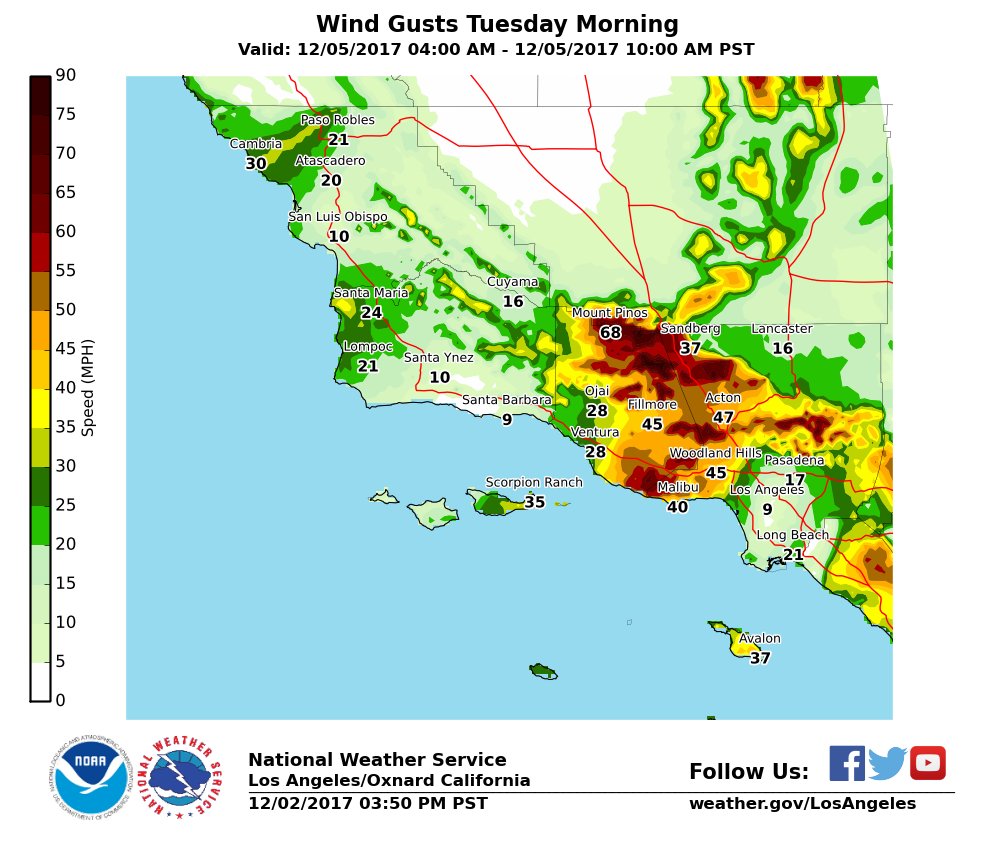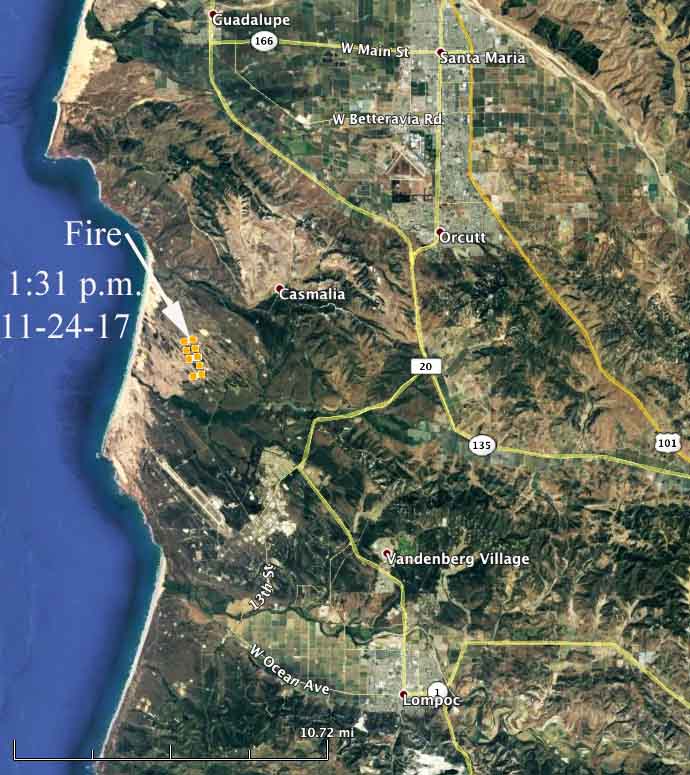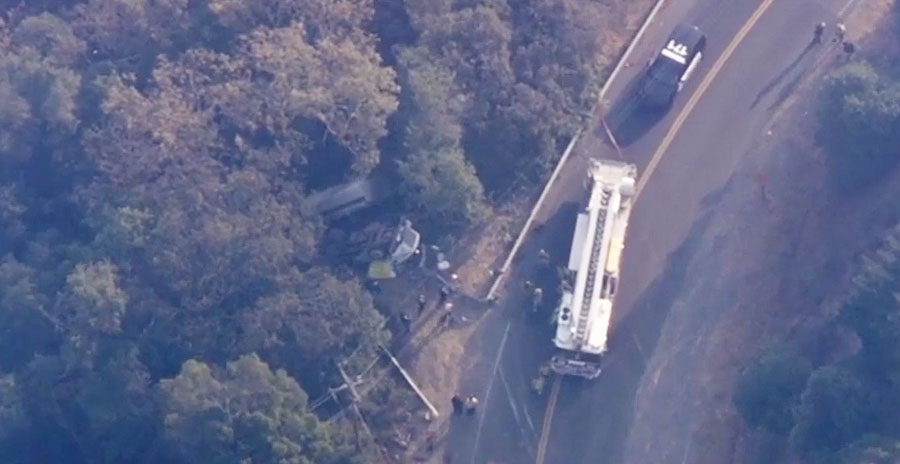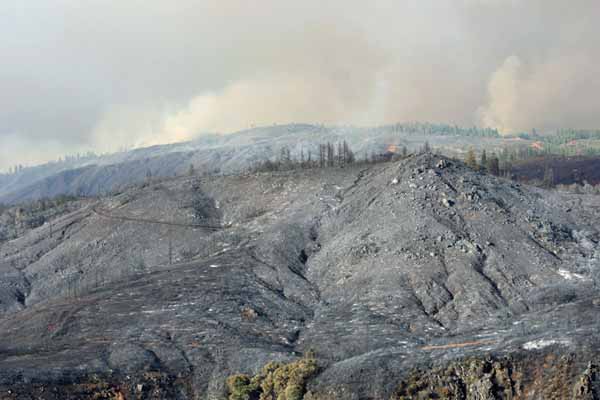The incident occurred October 18 on the Nuns Fire in Northern California
Above: photo from the report.
(Originally published at 10:28 a.m. MST November 22, 2017)
A report has been released about a near miss that occurred October 18 on the Nuns Fire between Santa Rosa and Napa, California. According to the Wildland Fire Lessons Learned Center’s summary of the incident there were no injuries on the five-person crew but the truck sustained major damage from a falling tree.
Data from the National Interagency Fire Center shows that between 1990 and 2014 18 firefighters were killed by hazardous trees.
Below is an excerpt from the report about the incident on the Nuns Fire:
On the Nuns Fire on the morning of October 18 at approximately 1145, during mop up operations, a large (60-inch DBH) fire-weakened, green Douglas fir tree fell from upslope, at a 90 degree angle, and landed across the hood of an engine that was parked on the road below with two people inside.
The five-person engine crew had been assigned to evaluate and identify hazards for the MM Division Supervisor.
In addition to patrolling, as the engine crew moved through the burned area, they were also mopping up hotspots along the roadside.
The crew had scouted the road to the end and were working their way back, suppressing hotspots.
The Engine Boss stopped the engine directly below a large green tree with fire and smoke coming from its base—which was obscured by unburned brush. One crewmember dragged hose from the live reel toward the base of the tree while another crewmember helped with hose deployment from the back of the engine. Another crewmember stood on the road as a lookout behind the engine.
The Engine Boss and Engine Boss Trainee remained in the engine’s front seats writing intel information for the Division Supervisor that had been gathered from their scouting mission.
The Engine Boss would later explain:
Intel for the Division Supervisor had not been passed forward and he (the Division Supervisor) had not sent anyone into the area for three days. We knew there were hazard trees in there and had received a good briefing. You just don’t look at a green tree with smoke at the base with green stuff all around it and think to yourself that this thing’s coming down any second. That’s just another smoke for the rest of the crew to knock out. We had knocked out half a dozen smokes before going down that road.
Approximately 90 seconds after assessing the base of the tree and spraying it with water, crewmembers outside of the engine began yelling that the tree was starting to fall. Crewmembers on the road moved quickly down the road. The Engine Boss didn’t put the engine into reverse because he couldn’t see if any of the crew was behind the engine. He attempted to move forward, but the tree had already fallen and hit a large oak tree across the road from the engine.
Oak Tree Reduces Impact onto Engine
The full impact of the falling tree split the large oak in half. The oak tree was located approximately 40 feet in front of the engine. The oak reduced the impact and possibly the location of impact to the engine. Ultimately, the 60-inch wide and 120-foot tall fir landed across the hood of the engine.
The impact caused major damage to the engine, impaling a branch in the hood and shattering the windshield. While all crewmembers were stunned, everyone was physically OK.
Afterwards, one of the crewmembers said: “We were making the area safe for someone, we were doing our job.”
The engine crew was on their eighth day on this fire and had been assigned to four different Divisions. The crew was frustrated by lack of assignment continuity. The area that the crew was working in appeared to have had chainsaw work prior to their assignment.
A brief defusing was conducted at ICP [Incident Command post] by PEER staff assigned to the incident.










